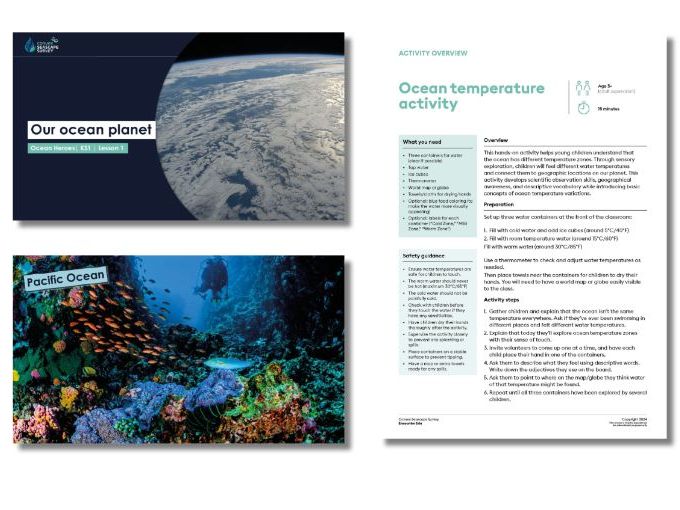







Lesson overview
This first lesson is all about creating the spatial framework for exploring the ocean, its climate zones, and how it is affected by the nature and climate crises. It is important for students to have some basic locational awareness when engaging with environmental change. Specifically to the ocean it is also important that students understand that the ocean is not just a big ‘bath tub’ but has distinct climate zones (warm, mild, cold), and that as the temperature of the planet increases, that these climate zones can change, with potential knock-on effects for ocean life and human reliance on a healthy ocean.
Learning outcomes
- Name the different parts of the ocean
- Understand that temperature varies across the ocean
- Map ocean conditions, names, and descriptions
Climate change and sustainability
As part of the strategy to embed climate and sustainability learning throughout primary school, this lesson has been designed to develop pro-environmental values and build the foundational knowledge needed to address climate and conservation topics more fully in later years.
Values integration
- Wonder at ocean diversity
- Care for ocean environments
- Importance of observation
- Global connection through oceans
Climate change links
This lesson provides the framework for learning about climate change in later years in three main ways. First, it provides a spatial understanding of the planet. Second, it shows how different areas of the planet experience different climates and temperatures. Last, it introduces the importance of the ocean, which is key to the proper teaching of climate change in later years. The ocean, which contains huge carbon stores, covers over two-thirds of the planet’s surface, absorbs over 95% of the excess heat from global warming, and absorbs 25% of the carbon dioxide from human activities.
Something went wrong, please try again later.
This resource hasn't been reviewed yet
To ensure quality for our reviews, only customers who have downloaded this resource can review it
to let us know if it violates our terms and conditions.
Our customer service team will review your report and will be in touch.